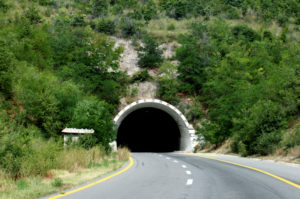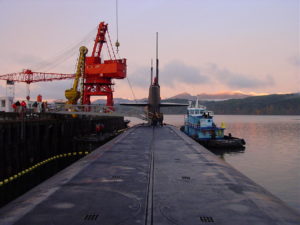 The role of infrastructure is to create benefit. No one wants to see waste. And yet we have many failed, wasteful, projects. Some may fail for unforeseen, and unforeseeable, reasons. But many of them fail because their underlying assumptions were not tested. Nor is this only a problem for public infrastructure, private infrastructure is just as vulnerable.
The role of infrastructure is to create benefit. No one wants to see waste. And yet we have many failed, wasteful, projects. Some may fail for unforeseen, and unforeseeable, reasons. But many of them fail because their underlying assumptions were not tested. Nor is this only a problem for public infrastructure, private infrastructure is just as vulnerable.
Consider the Melbourne Docklands project where many of the apartments that the private sector built (and was encouraged to build) relied on the general assumption that people would be willing to sell up large properties on the outskirts of the city to take up apartment dwelling to benefit from closeness to city attractions – and pay large sums for the privilege. This assumption has proved not to be true in sufficient numbers to justify the construction and many apartments are still unsold or unlet.
In addition, many of the apartments that have been sold have been taken up as investment properties by wealthy Chinese seeking an alternative location for their money. No-one lives in these apartments. So the projections of demand for newly established retail outlets in the complex have not been met. Could this have been foreseen? Maybe the overseas investment was not obvious then. But certainly it would need to be taken into account from now on. However, retail demand depended on close to full occupancy.
Maybe this will self correct in 5 years or more. However, if take up was expected to take time then an interim strategy was needed. Now, what had the potential to be a very attractive redevelopment serving the wider community may now suffer if landlords attempt to recover their investment by letting their apartments to temporary dwellers who have no commitment to the area.
A serious consideration is whether the policy planners gave sufficient – or indeed any – thought to the problems that might be experienced on the outskirts of the city if their assumptions of mass departures to the city proved correct.
What questions do these stories raise in your minds? If you were on a decision committee for a large redevelopment project, what questions would you ask?
 Jeff Roorda suggested this provocation. I wrote it, so don’t blame him! If you would like to submit a provocation for posting – keep it under 400 words and no more than 2 arguments. (i.e. leave something for someone else to say!) To set up a new provocation, email your suggestions to me at penny@talkinginfrastructure.com
Jeff Roorda suggested this provocation. I wrote it, so don’t blame him! If you would like to submit a provocation for posting – keep it under 400 words and no more than 2 arguments. (i.e. leave something for someone else to say!) To set up a new provocation, email your suggestions to me at penny@talkinginfrastructure.com
Or leave a comment on this one!
For years we have acted as if we could tax our way out of an infrastructure deficit if only they (the Government of your choice) would have the wisdom and courage to do it. That is why so much effort has been put into calculating ‘backlogs’. But is it true that we can fix the problem with more money?
The pro side: Yes, if we are prepared to pay for it by forgoing personal consumption (ie pay more tax or more rates) or by reducing other government expenditures. However, without some reduction in the total renewal bill what we have to go without might be rather painful. But would this clear the backlog?
The con side: No, for just as work expands to fill the time available (Parkinson’s Law), the infrastructure deficit or backlog expands to meet the money being spent on it! The clue is in the definition “The term Infrastructure Backlog refers to the total amount or value of renewal works that need to be undertaken to bring a Council’s (or other entity’s) asset stock up to an acceptable standard” source LGMA Knowledge Base. Consider the key word ‘acceptable’. Think back to when you were young, your funds were low and an ‘old bomb’ was quite acceptable (and certainly better than the bus!). But what did you do when you started to earn a decent income? Now it wasn’t ‘acceptable’ any more, so you upgraded. And that is what we all do. ‘Acceptable’ is a relative term. The more we spend on infrastructure, the higher our expectations and the higher the minimum ‘acceptable’ level. Whenever I hear that our roads or other assets are in poor condition, I think ‘relative to what?’ Spending more money to reduce the deficit is thus like a dog chasing its tail. And will be equally unsuccessful.
Your views?
 With monetary policy now so ineffective (bank rates are as low as they have ever been, in some countries negative, and yet they are not stimulating investment and spending) countries are increasingly looking to fiscal policy – that is direct spending by Governments. The expenditure of choice is infrastructure, and government infrastructure proposals are usually well received by the electorate because they are seen as creating jobs.
With monetary policy now so ineffective (bank rates are as low as they have ever been, in some countries negative, and yet they are not stimulating investment and spending) countries are increasingly looking to fiscal policy – that is direct spending by Governments. The expenditure of choice is infrastructure, and government infrastructure proposals are usually well received by the electorate because they are seen as creating jobs.
But proposals are normally vague on exactly what type of infrastructure spending is in mind, and the employment benefits of spending are often hyped up, so here are a few facts to bear in mind.
FACT: Out of every dollar spent in Australia, some proportion will go overseas in the form of imports. Some years ago, a government industrial economics report estimated that:
Maintenance generates 25% more employment than house construction and from 50% to 100% more employment than engineering construction. This is because:
- Maintenance is highly labour intensive, therefore there is little leakage of funds overseas to pay for imported elements
- House construction spending has a higher proportion of imports
- Engineering construction (i.e. infrastructure), with its specialised equipment and materials has an even higher proportion of imports.
FACT: It is not infrastructure spending specifically that creates jobs but ANY government spending. Some types of spending, as indicated above, will create more jobs than others (and engineering construction such as infrastructure is on the low end of job creation).
FACT: Just as putting money into the economy will stimulate job growth, it is also true that taking money out of the economy, e.g. by taxing us to pay for the infrastructure, or reducing other government spending for the same purpose, will reduce job growth.
FACT: Low income earners spend more of any dollars they earn than high income earners. So if we find the money for infrastructure by increasing taxes or reducing other spending on low income earners (which is what is happening at the moment) and we then spend that money on high income earners in infrastructure industries, this will itself reduce jobs rather than creating them.
So is infrastructure spending the jobs panacea so many believe it to be?
 In this post, Geoff Webb picks up on the question of infrastructure access.
In this post, Geoff Webb picks up on the question of infrastructure access.
The concept of ‘universal service provision’ stands in stark contrast to the ‘user pays’ model which is so often cited as a fair method of delivering services to the community, but is it?
Australians have long taken pride in being considered a fairly egalitarian society with an attitude of a fair-go for all. For many years, this was reflected in public policy and in the provision of essential infrastructure to all Australians, whether they be located in major cities and urban areas or in remote and isolated locations.
The history of telephone connection fees in Australia exemplifies the point, where actual costs for individual connections could be several orders of magnitude higher for a connection in the bush compared to connection in town, but a standard connection fee was charged for both. The community at large was, typically, fairly accepting of the idea that service charges, as long as they seemed reasonable, paid by the high number of users in the major metropolitan centres would effectively subsidise the relatively low numbers of remote and isolated services.
While critical infrastructure ownership and operation remained in government hands, Read More →
 I have been told that, today, asset managers and other middle to senior management decision-makers, are becoming a victim of the drive for ‘efficiency’: resources are being reduced, workloads increased. So much so, that they have ‘no time to think’. If this is true there are some very serious consequences.
I have been told that, today, asset managers and other middle to senior management decision-makers, are becoming a victim of the drive for ‘efficiency’: resources are being reduced, workloads increased. So much so, that they have ‘no time to think’. If this is true there are some very serious consequences.
I recall a client of mine who wanted my help in developing strategic policy and planning for her more than two billion dollars of education assets: schools and colleges. Her day was back-to-back meetings, so much so that we had to get together for policy discussions over coffee at 7 am or else after her day eased off at 7 pm. I asked her, with such a hectic schedule, when did she ever get time to think. She smiled wryly, shrugged and said “When I get home!” I was concerned for this bright young woman but also for her staff who really needed the strategic direction that she should have had the time to give them. Then my concern moved to the students, who were being shortchanged by not having infrastructure decisions thoughtfully coping with changing needs, and to their parents and their future employers. The whole community misses out when infrastructure decision-makers do not have time to think.
And the individual misses out too. With increasing automation, jobs that do not require thinking are going to be taken over by robots. Do we really want infrastructure decisions made by computer algorithms, by robots?
Questions today
Is it true that many decision-makers believe they have ‘no time to think’?
Is this something we need to address, and if so, how could we do it?
 Today’s post is by Mark Neasbey of the Australian Centre for Value Management
Today’s post is by Mark Neasbey of the Australian Centre for Value Management
We’ve all heard the line, usually around election cycles “crime is a concern to the community, crime rates are getting worse under this government – we can do better and we’ll put more police out there…blah, blah blah”. The proposal is never costed but always described as affordable and “there’ll be no tax increases to pay for this…blah, blah, blah”.
The extra police need somewhere to work – so we need more police stations. They need vehicles to respond to incidents and do their follow-up interviews etc. So we’ll need to buy more cars for them as well. So we’ve already locked-in some infrastructure commitments just bydeciding to employ more police. Well, Well, of course, the extra police are successful in arresting more suspects – that’s what you’ve employed them to do. These additional suspects need to be brought to justice. That means more appearances before magistrates and judges. But to get there they first must have legal representation and also more prosecutors – so the Director of Public Prosecutions needs more staff and most likely also needs more offices and support facilities. So a second infrastructure impact is becoming evident. The successful arrest and presentation of suspects before the courts could mean the need to appoint more magistrates and judges to deal with the increased number of cases, which in turn could mean the need for additional court rooms and related holding cells for the suspects. So we now have a third potential commitment for additional infrastructure.
But wait – there’s more…. Read More →
 Most writers who set out to define ‘public infrastructure’ give up! I can understand why.
Most writers who set out to define ‘public infrastructure’ give up! I can understand why.
Is ownership the key? Does public infrastructure need to be publicly owned? This would make definition simpler. But the very same infrastructure can pass from private to public and back to private again without changing the service provided as, for example, when the Adelaide Electric Company, which started as a private company was taken over by the Government as a war time measure, became part of the public company, the Electricity Trust of South Australia. The generation, distribution and retailing arms were then disaggregated, with some sold and some let under long term leases to the private sector.
If not ownership, is ‘control’ the key? Does government regulation substitute for ownership, and if so, what level of regulation is necessary – price control, worker safety, environmental protection? (A subsidiary, but important, question here is to what extent do the regulators work in the ‘public interest’ and to what extent as protectors of the incumbent agencies.
Then are we looking at ‘access’? For example, rail track, roads, and depots within, say, Dupont Chemicals would be private infrastructure since its purpose would be to provide service only to Dupont and access to these facilities would be limited to Dupont. Now we may be getting somewhere. Public infrastructure would then be infrastructure that the public has access to. They may have to pay for it, but the right to access would be open to all.
This places the focus on service, and access to service. This, in turn, may overcome a problem that all asset managers and infrastructure planners have observed, when infrastructure is defined in terms of assets rather than service, we can have a wide differentiation. For example, some would limit infrastructure to transport systems (pipes, wires, roads, rail). Others would include public buildings (government offices and schools and hospitals) but not private buildings (private offices, private schools and private hospitals). Some would differentiate between passive civil structures (infrastructure) and electrical and mechanical assets (plant and machinery). Others might make a differentiation between these elements but consider them all as subsets of infrastructure, along with fleet. It all gets rather confusing.
Questions today are:
Is defining public infrastructure in terms of service and access to service useful?
Such a definition may open up new questions for exploration, what might these be?
 My friend did not care for the streetscaping decision made by our local council and was angrily denouncing it to
My friend did not care for the streetscaping decision made by our local council and was angrily denouncing it to
us all at coffee, concluding “This is a useless council, they simply do not care for the individual”.
Which raises the question – should they? Council decisions may be made well or poorly, but they need to be judged by their effect on the community as a whole not on any one individual. In fact, when decisions are made in favour of an individual, we call that corruption!
So why do we get so aggrieved when councils make decisions not to our liking? For there is no doubt that we do. I suspect we fail to make the switch from being a customer to being a citizen. We carry on thinking ‘me’ when we should be thinking ‘we’.
My question for you today is a personal one:
Not how we can get others to make the switch, but rather how can we, ourselves, do it? What experiences have you had when you just naturally switched to ‘we’ thinking? What was it about those situations that caused the switch?
 As a young economics student I was all for efficiency. So much so that if it could be proved that it was ‘efficient’ to send women and children down the mines – down they would have gone! But is economic efficiency to be our only criterion for evaluating government and infrastructure policy?
As a young economics student I was all for efficiency. So much so that if it could be proved that it was ‘efficient’ to send women and children down the mines – down they would have gone! But is economic efficiency to be our only criterion for evaluating government and infrastructure policy?
I thought of this when reading Leith van Oselin’s comment on the Federal Government’s submarine project. Writing in Macrobusiness as the ‘Unconventional Economist’, he nevertheless puts forward a very conventional economic argument. Using the release of the Productivity Councils’ 2014-15 Trade and Assistance Review as his starting off point, he argues: “Paying more for local builds, without sufficient strategic defence and spillover benefits to offset the additional cost, diverts productive resources (labour, capital and land) away from relatively more efficient (less assisted) uses. It can also create a permanent expectation of more such high cost work”. The article is titled “PC hits out at submarine pork”.
Our question today: Seems straightforward enough, doesn’t it? But is it?

Recent Comments